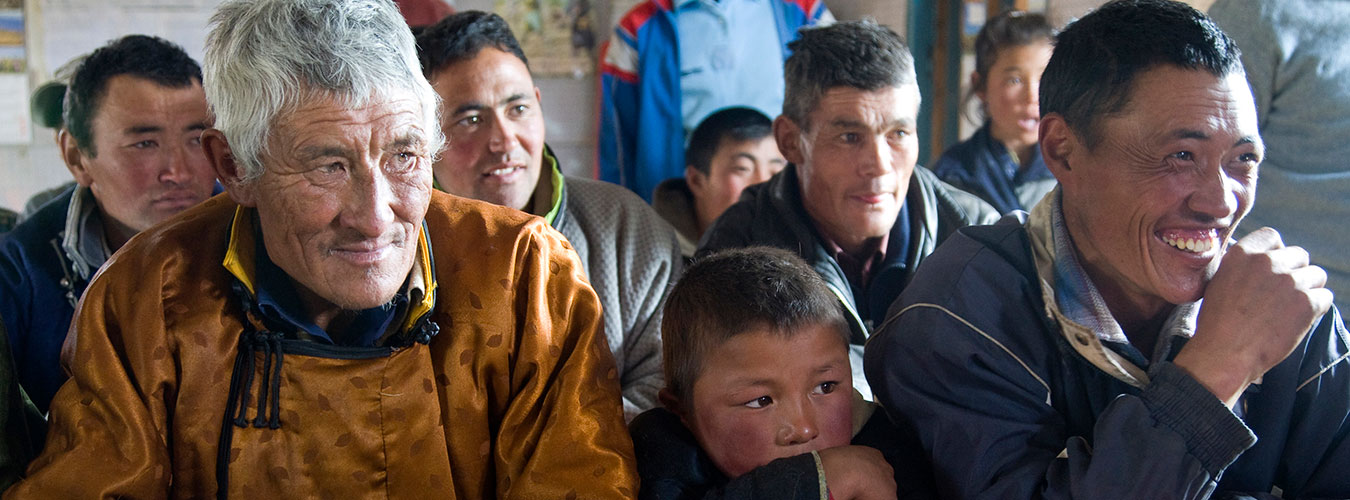
Shifting Demographics
The world’s population is expected to increase by two billion people, from 7.7 billion at present to 9.7 billion in 2050, before reaching a peak of nearly 11 billion by the end of the century as fertility rates continue to decline. During this period, the global population is projected to become more and more urban, while children below age 5 will be outnumbered by persons aged 65 or above.
Half of global population growth between now and 2050 is expected to come from just nine countries: India, Nigeria, Pakistan, the Democratic Republic of the Congo, Ethiopia, Tanzania, Indonesia, Egypt and the United States of America (in descending order of increase). The population of sub-Saharan Africa is likely to double, while the population of Europe is likely to shrink.
Meanwhile, people are on the move. While the percentage of international migrants has remained around 3 per cent of the global population over the past two decades, their number has increased by more than half since 2000. At the same time, the number of people forced to flee their homes has risen sharply due to protracted conflicts and could increase further due to climate change and environmental degradation. The vast majority of refugee and migrant flow are to countries in the global South.
YOUTH BULGES
In some regions of the world, young people (ages 15 to 24 years) comprise a large and rapidly growing segment of the population. In sub-Saharan Africa, where the total population is projected to double by 2050, the population of working-age people (from 25 to 64 years) is growing faster than in any other age group. Most countries in Asia and in Latin America and the Caribbean have already witnessed a similar bulge of young people followed by a bulge at working ages.
While it lasts, a relative increase in the working-age population offers an opportunity for accelerated economic growth: the so-called “demographic dividend”. In this context, efforts to achieve the Sustainable Development Goals – such as ending hunger, ensuring healthy lives, promoting education and life-long learning, creating jobs, improving social protection and reducing inequality – can reinforce these trends and lead to greater opportunities.
At the same time, youth bulges can increase the challenge to public finances struggling to provide services to the young people today, as well as the challenge for the society in coming decades as it struggles to deal with its ageing population.
WE ARE GETTING OLDER
Older persons (ages 65 and above) today comprise the world’s fastest growing age group. Globally, for the first time in 2018, older persons outnumbered children under the age of five, and by 2050, older persons will outnumber adolescents and youth (ages 15 to 24). Some regions, such as Europe and Eastern Asia, already face a considerable challenge in supporting and caring for their older populations. As life expectancy continues to increase, older persons are likely to play more significant roles in societies and economies. We must adapt education, health-care and social protection systems to provide a public safety net for this growing age group.
PEOPLE ON THE MOVE
From our earliest days, migration has provided humans with opportunities. In 2019, international migrants – people living outside their country of origin – numbered around 272 million, or almost 3.5 per cent of the global population. In 2000, this figure was 2.8 per cent. Asia hosts the largest number of international migrants, but in recent years Africa has experienced the fastest increase. Most international migration occurs between countries in the same geographic region.
People move for many reasons, including work, family and education. A growing number, however, are leaving their homes and communities as a result of violence, persecution, deprivation or disasters, including as a result of climate change. Together, these factors have led in recent decades to a record high in the number of forcibly displaced persons: over 70 million in 2018, including close to 26 million refugees. Since 2012, the number of refugees under the care of the UN Refugee Agency, UNHCR, has nearly doubled. Nearly four out of every five refugees live in a country that shares a border with their country of origin.
Human traffickers have exploited the vulnerability of migrants. This is one factor that motivated governments to adopt the Global Compact for Safe, Orderly and Regular Migration in 2018. It is not a legally binding document but a framework to support international cooperation on migration.
URBAN FUTURE
Until 2009, more people lived in rural than in urban areas. Today, around 55 per cent of the world’s population lives in towns and cities, with the level of urbanisation projected to reach almost 70 per cent by 2050. Much of the growth in urban populations will take place in Asia and Africa, especially in China, India and Nigeria where the fertility rates remain high.
Like migration, urbanisation requires effective management by national and local authorities. At present, cities occupy less than 2 per cent of the world’s total land but produce 80 per cent of the global gross domestic product (GDP) and over 70 per cent of carbon emissions. The speed and scale of urbanisation presents challenges in ensuring the availability of adequate housing, infrastructure and transportation, as well as conflict and violence . Nearly one billion people are classified as “urban poor,” and mostly live in informal urban settlements.
At the same time, greater efforts are required to ensure that those living in rural areas are not left behind, including in terms of access to the digital economy and society. Small-hold farmers, pastoralists and indigenous peoples play a vital role in producing our food and protecting our natural capital.
FOR MORE INFORMATION
The Sustainable Development Goals
International Organization for Migration
IOM | World Migration Report 2018
UN DESA | World Population Prospects 2019
UN DESA | International Migrant Stock 2019
UN DESA | World Urbanization Prospects: The 2018 Revision
UN High Commissioner for Refugees
PDF VERSION
